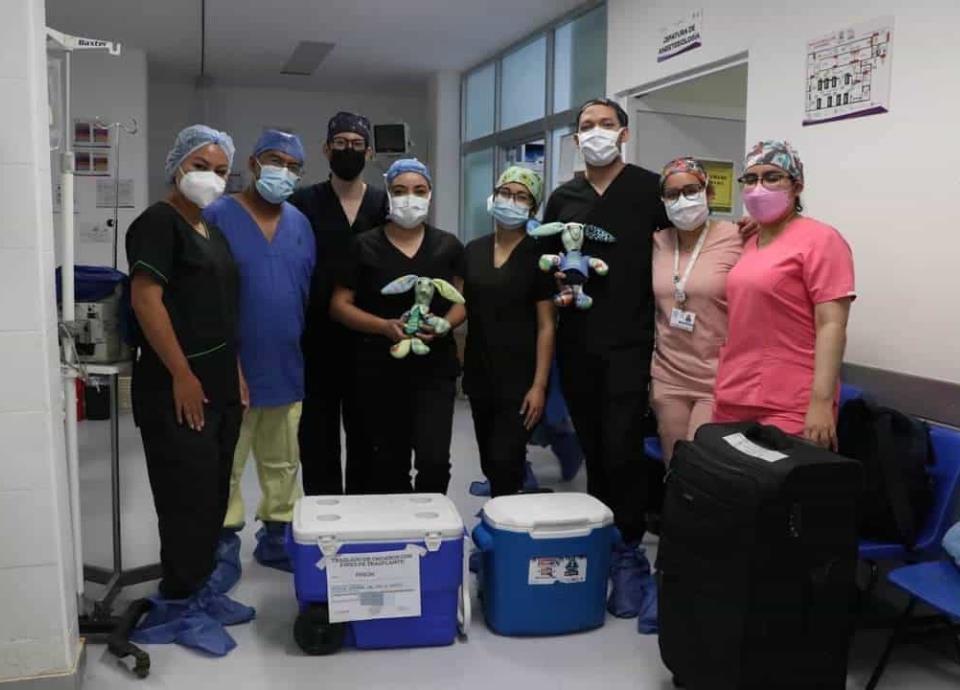With more than 20 thousand recipients on the waiting list, the National Transplant Center promotes donation of organs and fabrics in Mexico.
José Salvador Aburto Morales, director of the Cenatrahighlighted the importance of adding lives by donating organs.
Whether in life or after death, people can share a little of themselves with patients whose life depends on a new organ.
However, those who require an organ or tissue have to wait months and even years, to the point that only one in five manages to be transplanted.
The rate is 4.5 donations from brain-dead deceased per million inhabitants.
Sense in which we work on dissemination campaigns for the Registry of Voluntary Donors and the Donor Card.
Transplants can only be carried out through the solidarity and generosity of the people who donate their organs altruistically and voluntarily; so without a donor there is no transplant.
“We must sow awareness and sensitivity of the donation of organs and tissues…the gap between what is done with transplants and what is required is very high,” he stressed.
“This year, that culture that we needed so much is being consolidated…every day of the year we register between four and three multi-organ donations from different institutions, mainly from Social Security.”
“They always ask us how the transplants are going? Well, every day, day and night, Saturday and Sunday, and holidays, all institutions give their work and effort so that our patients are well,” he said.
The National Transplant Center, created in 2000, he explained, is the body responsible for promoting, directing, coordinating and regulating the processes from the donation until transplant organstissues and cells, giving patients who require it a greater opportunity with legality and safety.
The above within standards of quality, equity, altruism and justice.
Between 5,000 and 6,000 transplants are performed each year. organs in the country, with kidney being the most requested, with 16,342 patients waiting.
In addition to cornea with 3,536, liver with 209 and heart with 37.
Some cases require two organs such as liver-kidney, kidney-pancreas, heart-kidney and heart-lung.
During life, kidneys, a segment of lung, liver, intestine and pancreas can be donated.
Those who die from cardiac arrest are eligible to donate tendons, arterial vessels, corneas, bones, skin, cartilage and heart valves.
And lungs, liver, kidneys, intestine, tendons, arterial vessels, corneas, heart, bones, pancreas, cartilage and heart valves, those who died due to brain death.
It is worth noting that in the last 50 years, 180 thousand bone transplants have been performed. organs and fabrics safely and successfully.
During 2022, 3,061 cornea transplants, 2,712 kidney transplants, 238 liver transplants, and 42 heart transplants were carried out.
Likewise, in the first half of this year there were 1,467 kidney cases, 1,724 cornea cases, 147 liver cases, and 19 heart cases; one patient even received two lungs.
Although the reactivation of the Donation and Transplants after the Covid-19 pandemic brought with it a more than double increase; However, there is still much to do.
Chronic diseases such as diabetes, obesity and kidney disease are the main reasons why Mexicans require a transplant. organs.
What you should know about donation
If you decide to be a donor of organsyou must inform your family or loved ones.
This is important because when a person loses their life and their family members are aware of their decision to be a donor, it is easier for them to make the decision to authorize the donation. donation.
In some cases a person can donate an organ or portion of an organ without affecting their health. This is called donation in life.
For example, you can donate a kidney since it is possible to lead a normal life with just one. The risk of kidney removal surgery is minimal.
To do this, you must be of legal age and in full use of your mental faculties, in addition to granting your consent expressly, that is, in a document.
This is after obtaining a favorable resolution from the hospital’s transplant committee, following a medical, clinical and psychological evaluation.
When a person dies from cardio-respiratory arrest or brain death and the consent of his or her family is available for the donationIt is a donation cadaverous
The probable donor is evaluated by the coordinator of donation to determine whether or not the deceased is a candidate for donation of organs. If appropriate, proceed to
2023-10-21 06:51:22
#Cenatra #promotes #culture #organ #tissue #donation


